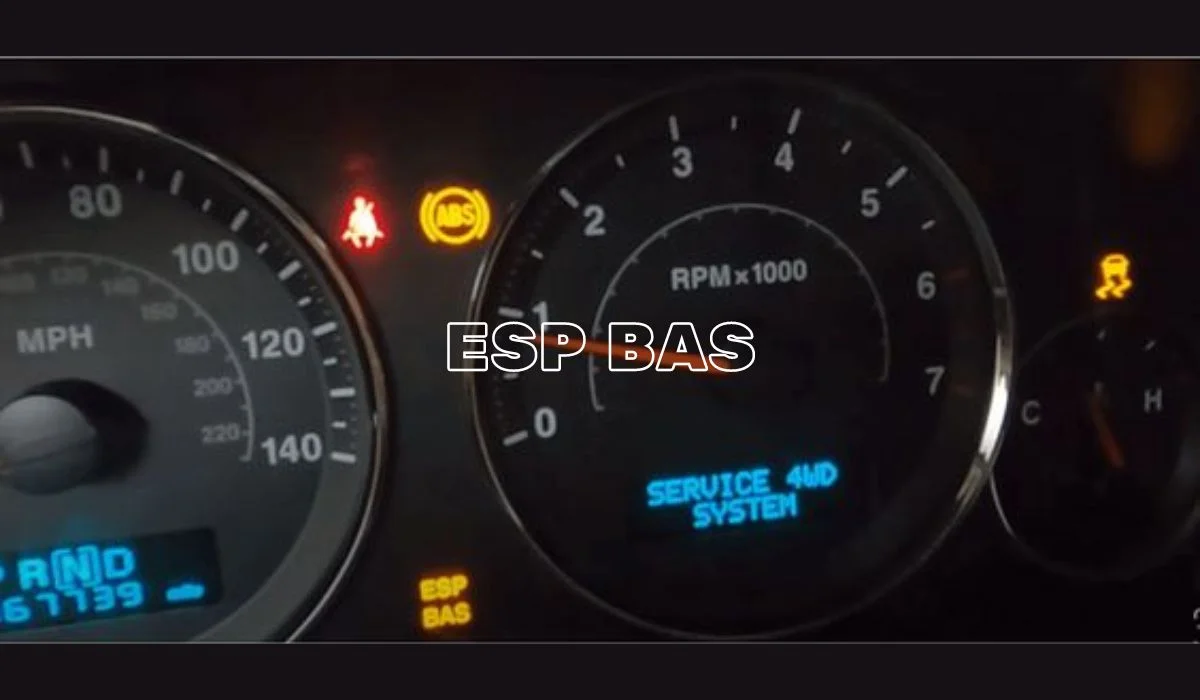When you see the ESP BAS light illuminate on your dashboard, it signifies a potential issue with your vehicle’s Electronic Stability Program (ESP) or Brake Assist System (BAS). Understanding what this warning light means and how to address it can prevent potential safety issues and ensure your vehicle remains in optimal condition. This comprehensive guide explores the functions of ESP and BAS, common issues that trigger the warning light, and what steps you should take to resolve these issues.
What is the ESP BAS Light?
The ESP BAS light is a warning indicator on your dashboard designed to alert you to problems within your vehicle’s stability and braking systems. This light may illuminate for various reasons, and it is crucial to understand what it signifies to take appropriate action.
Trending: The Nissan K24 Propane Pressure Sensor : A Comprehensive Guide
Understanding Electronic Stability Program (ESP)
What is ESP?
The Electronic Stability Program (ESP) is an advanced safety feature in modern vehicles that helps maintain control during challenging driving conditions. It works by monitoring the vehicle’s direction and steering, and when it detects a loss of traction, it automatically applies braking to specific wheels to help stabilize the vehicle.
How ESP Works
ESP relies on various sensors to track the vehicle’s movements and driving conditions. If the system detects that the vehicle is skidding or losing traction, it intervenes by selectively applying the brakes and adjusting engine power to help the driver regain control. This system is especially useful in slippery conditions or during abrupt maneuvers.
Common Issues with ESP
Several factors can trigger the ESP warning light, including:
- Faulty Sensors: Malfunctioning wheel speed sensors or steering angle sensors can disrupt the ESP system.
- Electrical Problems: Issues with the vehicle’s wiring or electrical components can affect ESP functionality.
- System Calibration: Sometimes, the ESP system may require recalibration to function correctly.
Understanding Brake Assist System (BAS)
What is BAS?
The Brake Assist System (BAS) is designed to provide additional braking force during emergency situations. It detects rapid braking and automatically increases brake pressure to help reduce stopping distances, thereby enhancing safety during sudden stops.
How BAS Works
BAS works by monitoring the speed and force of the driver’s brake application. If the system detects an emergency braking situation, it provides additional braking power to ensure the vehicle stops as quickly as possible. This feature is particularly useful in high-pressure driving scenarios.
Common Issues with BAS
Typical problems that can trigger the BAS warning light include:
- Brake Fluid Levels: Low brake fluid levels can affect the performance of the BAS.
- Brake System Faults: Issues with the brake components or hydraulic system may impact BAS functionality.
- Sensor Malfunctions: Faulty sensors within the BAS system can lead to incorrect readings and warning lights.
Why Does the ESP BAS Light Come On?
The ESP BAS light can turn on for various reasons, often indicating a malfunction or issue within the ESP or BAS systems. Understanding why this light appears can help you address the problem more effectively.
Possible Causes for the ESP BAS Light
- Faulty Sensors
Sensors play a crucial role in both ESP and BAS systems. If these sensors fail or provide incorrect readings, the warning light may illuminate. - Brake System Issues
Problems with the brake system, such as low brake fluid or worn brake pads, can trigger the light. - Electrical or Wiring Problems
Electrical faults or damaged wiring can disrupt the communication between the ESP and BAS systems, leading to warning lights. - System Calibration Needs
Sometimes, the ESP and BAS systems may need recalibration or a reset to function properly. - Malfunctioning Control Modules
The control modules that manage ESP and BAS operations can experience faults, causing the warning light to appear.
What Should You Do When the ESP BAS Light Comes On?
Immediate Actions
- Check Your Brake Fluid Level
Ensure that your brake fluid level is adequate. Low fluid levels can affect both ESP and BAS functionality. - Inspect for Visible Issues
Look for any obvious signs of damage or malfunction in your braking system or wiring. If you notice any issues, address them promptly. - Drive Cautiously
If the light is on, drive with increased caution. Avoid sudden maneuvers or high-speed driving until the issue is resolved.
When to Seek Professional Help
If the light remains illuminated after checking the basic issues, it is essential to consult a professional mechanic. They can perform a thorough diagnostic to identify and fix any underlying problems.
How to Prevent ESP BAS Issues
Regular Maintenance
Regular maintenance of your vehicle’s braking and stability systems can help prevent issues with ESP and BAS. This includes:
- Routine Brake Inspections
Have your brakes inspected regularly to ensure they are in good condition. - Regular Fluid Checks
Check brake fluid levels and replace it as needed. - Sensor Calibration
Ensure that sensors are properly calibrated and functioning.
Addressing Issues Early
Address any warning signs or issues with your vehicle’s systems promptly. Early intervention can prevent more severe problems and ensure your vehicle remains safe and reliable.
Conclusion
Summary of Key Points
The ESP BAS light is a critical warning indicator that alerts you to potential issues with your vehicle’s Electronic Stability Program and Brake Assist System. Understanding the functions of it, recognizing common problems, and knowing what actions to take can help you maintain your vehicle’s safety and performance.
Final Thoughts on ESP BAS
Dealing with the light can be concerning, but staying informed and proactive can mitigate potential risks. Regular maintenance and timely repairs are key to ensuring your vehicle’s stability and braking systems function correctly. If you encounter persistent issues, seek professional help to resolve them effectively.
FAQs
- What does the ESP BAS light mean? The light indicates a potential issue with your vehicle’s Electronic Stability Program or Brake Assist System.
- Can I drive safely with the ESP BAS light on? While you can drive, it is essential to proceed with caution and address the issue as soon as possible to ensure your vehicle’s safety.
- How can I reset the ESP BAS light? Resetting the light typically requires diagnostic equipment. Consult a professional mechanic for assistance.
- How often should I check my brake fluid levels? Check your brake fluid levels regularly, at least once a month, and top up as needed.
- What should I do if the ESP BAS light keeps coming back on? If the light persists, have your vehicle inspected by a professional to identify and resolve the underlying issue.




